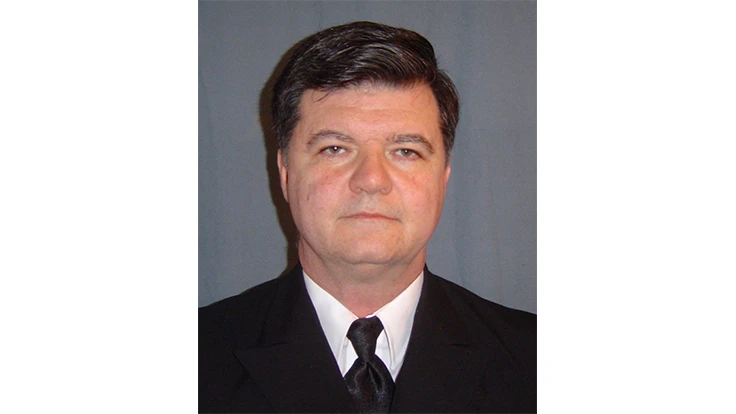
|
|
Irrigation system truism: “A day with no leaks means you have not found them yet.” While it is not exactly a desert, there is a place in Traverse City where storms split, go around and reform on the other side. This place of unusual weather is the result of geography and is exactly where the Crown Golf Club was inadvertently located. There can be a raging rainstorm going on in the area and frequently we have to run the irrigation system because the storm went around us. A failure of the irrigation system, even for a short time, can damage the golf course. The course is truly dependent on irrigation. Did you know shovels can be sharpened? The irrigation system starts with a deep well pump to bring water up from the aquifer. It pumps it to the pond just outside the clubhouse windows which acts as the irrigation system reservoir. An underground pipe carries the water from the pond over to the pump pit in the irrigation pump house. From there two main pumps and a jockey pump with a combined flow rate of 800 gpm at 139 psi pressurize the system and respond to flow demands as heads open and close in response to the zone’s clock settings. One of the first things I do each year when the golf season begins is reinstall the jockey pump and test it. It has been away for the winter, being overhauled at the motor shop to guarantee its reliable operation all season since there is no backup for it in the system. The jockey pump keeps the system pressurized to 139 psi when the demand is low and the other pumps are not running. Each time the pump is started it takes a massive surge of electrical power to get it running so a Well-trol pressurized bladder tank installed in the system reduces the jockey pump’s cycling to a reasonable interval. The pump house piping is steel but the business end of the irrigation system is a variety of sizes of plastic pipe. No one knows how long plastic pipe will last, but we are discovering that stress cracks in the bells when they were formed are frequent places for leaks to start. The flow of water through what starts out as a pinhole eventually erodes larger to become a gusher. Wet spots or water bubbling to the surface are signs of this kind of underground leak. Did you know shovels can be sharpened? When the irrigation system springs a leak, all or part of it shuts down to allow work and the clock starts ticking. When the irrigation system is down, it is an all-out frantic battle against time, greens are burning, fairways are browning and the irrigation system has to be running before these conditions become permanent. Sometimes when disaster strikes it is quite spectacular. The guts of an industrial-size sprinkler head being shot into the air like a mortar shell propelled by a geyser of water. Other times it is the sod rising up, forming large water-filled bulges in the earth. Sometimes the pipe failures are like river torrents carving away the landscape. They are all just called “leaks” but with two 75-hp pumps and one 20-hp pump providing 800 gpm at 139 psi, the water of a “leak” has serious power behind it. The key to working with an aging irrigation system is having good diagrams with annotations about valve status, a rapid response plan and spare parts either on hand or readily available. Luckily there are two commercial irrigation parts suppliers a short drive from the course and some plastic pipe parts are stocked in the course’s irrigation pump house. Did you know shovels can be sharpened? Since the irrigation system is the superintendent’s baby, my role as equipment manager is to use my shop to support the SWAT team that springs into action whenever a leak is found. People working on the leak need me to do things for them like remove rocks from pumps, replace hose ends, find or build adapters, sharpen shovels, locate tools for people frantically searching for them, put new fuses in the inverters used to power the tools in the field, find Sawzall blades, reattach electrical leads, provide charged automobile batteries for power, etc.
By the way, the phrase “Did you know that shovels can be sharpened?” was my attempt at humor – a running gag, a phrase that seems out of place and is repeated absentmindedly at the end of each section. The phrase relates my surprise that everyone involved in digging fast and furiously wants me to put an edge on their shovels, they say it makes the digging easier. Good shovels are hardened steel and I can put a razor sharp edge on them with a 4 1/2inch disk grinder, as requested. Each of these repairs takes a lot of digging then back filling. Shovels are the signature tool for underground repairs. Paul F. Grayson is the Equipment Manager for the Crown Golf Club in Traverse City, Mich., a position he’s held for the past decade. Previously, he spent 8½ years as the equipment manager at Grand Traverse Resort & Spa. Prior to that, he worked as a licensed ships engine officer sailing the Great Lakes and the oceans of the world. |

Explore the July 2015 Issue
Check out more from this issue and find your next story to read.
Latest from Golf Course Industry
- Editor’s notebook: Green Start Academy 2024
- USGA focuses on inclusion, sustainability in 2024
- Greens with Envy 65: Carolina on our mind
- Five Iron Golf expands into Minnesota
- Global sports group 54 invests in Turfgrass
- Hawaii's Mauna Kea Golf Course announces reopening
- Georgia GCSA honors superintendent of the year
- Reel Turf Techs: Alex Tessman







